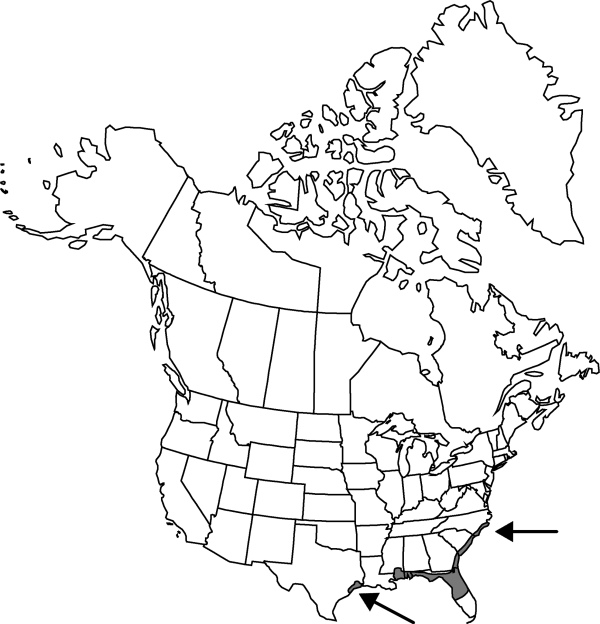Difference between revisions of "Opuntia pusilla"
Syn. Pl. Succ., 195. 1812.
FNA>Volume Importer |
FNA>Volume Importer |
(No difference)
| |
Revision as of 22:22, 16 December 2019
Shrubs, creeping, often forming mats, trailing, to 0.1 m. Stem segments easily detached, green, purplish red under stress, flattened, elliptic to linear, sometimes subcylindric (to subspheric), 2.5–5(–8) × 1.2–2.5 cm, tuberculate, glabrous; areoles 2–5 per diagonal row across midstem segment, subcircular, 2–3 mm diam.; wool tan to gray. Spines (0–)1–2(–4) per areole, in distal 3/4 of stem segment areoles (to nearly spineless), porrect to spreading, red-brown, aging gray, stout, straight, terete, to 30 mm, strongly barbed. Glochids in crescent at adaxial edge of areole, pale yellow, aging brown, to 3 mm, longest at areole apex. Flowers: inner tepals yellow throughout, 20–30 mm; filaments and anthers yellow; style and stigma lobes white. Fruits green becoming red-purple at late maturity, barrel-shaped, 18–30 × 12–20 mm, fleshy, glabrous, spineless; areoles 8–16. Seeds tan, subcircular, flattened, 4–6 mm diam.; girdle slightly protruding. 2n = 44.
Phenology: Flowering spring (Apr–May).
Habitat: Dune and pine scrub, primarily coastal, sandy openings, dunes, or rocky outcrops
Elevation: 0-100 m
Distribution

Ala., Fla., Ga., Miss., N.C., S.C., Tex.
Discussion
Selected References
None.